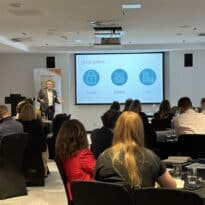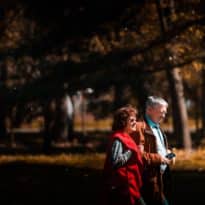A report from the International Longevity Centre UK has found that older workers will be key to post-Covid recovery. Yet, one in 10 workers over the age of 65 has stopped employment since the Covid-19 lockdowns began, new data has shown.
The figures from the Office for National Statistics showed that employment among those aged 65+ was 1.28 million in the three months to August, down 122,000 on the first three months of the year.
Since March, the UK’s overall number of payroll employees has fallen by 673,000, although the larger falls were seen at the start of the pandemic, the ONS said.
Commenting on the figures, Stephen Lowe, group communications director, Just Group, said: “The inactivity rate showing the proportion in this age group (over 65s) who are retired had gradually been falling for many years, but in recent months it has picked up and the inactivity number has risen by 207,000 since the first three months of 2020.
“Advisers have a crucial role to play in helping clients understand their options and finding some security and confidence when facing what may well be unexpected circumstances. The State Pension Age reached 66 this month but it seems the Covid-19 effect has been to reverse the increase in the number of people working later in life. It appears that the policy of encouraging people to work later in life may be among the casualties of Coronavirus for some time to come.”
Meanwhile, the report from the International Longevity Centre UK, which was launched ahead of the G20 Finance Ministers’ and Central Bankers’ meeting, shows every third dollar is currently earned by someone aged 50 or over, with nearly one in three workers across the G20 falling into this age bracket.
Looking ahead, the proportion of over 50s in the workplace could rise to as much as 40% by 2035, generating nearly 40% of all earnings.
The report argues that leveraging the economic contributions of older people will be instrumental in the global post-pandemic recovery and that addressing health barriers to work for older people could unlock a significant “longevity dividend.”
Analysis by the ILC-UK found higher rates of employment among older people in countries that spend more on health as a proportion of GDP. Across countries, a 1% increase in health spending led to a 3% increase in the employment rate for people aged 55 to 64.
The think tank says if G20 countries enabled older people to work at the same rates seen in Iceland, they could experience a GDP gain of $3.7 trillion, averaging 7% of GDP.
ILC-UK has called on G20 governments to deliver an ‘Ageing Society New Deal’ that would see countries invest more in preventative healthcare and support work for an ageing society.
David Sinclair, director, ILC-UK, said: “Policy makers are so fixated on the direct costs of ageing that they fail to notice the significant and growing contributions that older people make. This prevents them from fully realising the social and economic potential of older people – and from appreciating the longevity dividend.
“Older people’s social and economic impact is already significant, but there’s potential to increase this further. The barriers they face are in part avoidable – and the most important is poor health. Despite the tragedy and the devastation, COVID-19 has placed society in an exceptional moment to prioritise health and act on ageing. It has shown us how health and the economy are linked and has exposed the dangers of under-investing in prevention.”






























